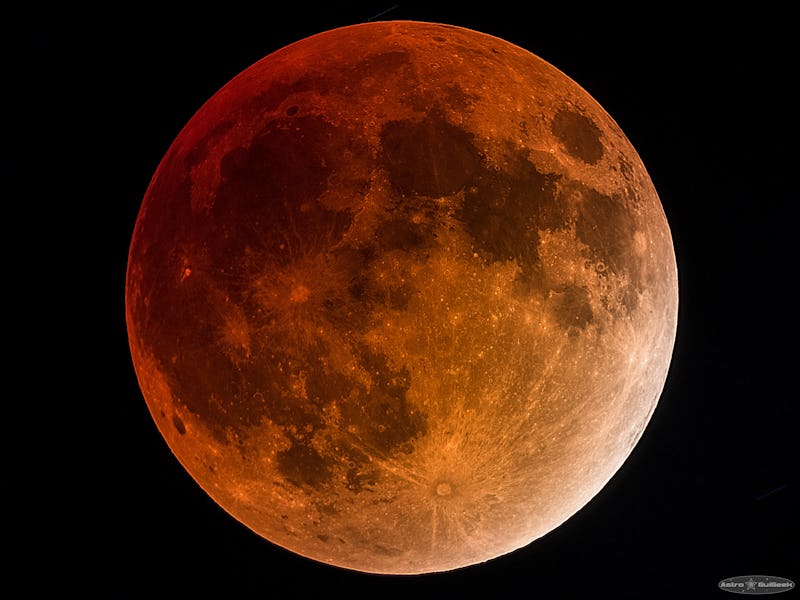Pink Moon 2018: How to Spot Venus, Mars, Jupiter, and Saturn Tonight
Tonight's full moon is a planetary party.

April was a month full of bright celestial happenings, including the Lyrid meteor shower that lit up the sky last week. The month ends on a bright note with a full moon on Sunday, aka the Pink Moon. Not only will the moon be visible across the United States, but Venus, Mars, Saturn, and Jupiter will also be visible to the naked eye at different points throughout the night.
The full moon is slated to rise at 7:31 p.m. Eastern, at which point the Pink Moon will share the spotlight with the setting sun for about 20 minutes. After that, the moon will be hosting planetary surprise guests all night, beginning with Venus.
Pink Moon in Earth's shadow on April 2015
Join our private Dope Space Pics group on Facebook for more strange wonder.
The “morning star” planet will still be visible in the sky for the first two hours after sunset. The planet will be about 21.7 degrees above the horizon for those watching on the east coast and can be spotted just south of due west. As the third-brightest object in the sky after the sun and the moon, it will be easy to spot before it sets at 10:03 p.m. Eastern.
Venus won’t be the only planet contending with the Pink Moon in the early evening. Jupiter will rise at 8:31 p.m. Eastern and will also be visible. The pair will appear close together all night, but will reach their closest distance right before dawn on April 30. The Pink Moon and Jupiter will be spotted sitting just six degrees away from each other, low in the sky before setting in the west.
The planetary partying doesn’t slow down after midnight. Saturn will rise 12:24 a.m. Eastern, followed by Mars at 1:28 a.m. Both planets will be high in the sky after 3 a.m Eastern and until dawn. Expect to find them anywhere between 18 and 25 degrees above the horizon, depending on location. Weather conditions permitting, both planets will be bright enough to be seen without the aid of a telescope.
The Pink Moon — which got its name from the appearance of the phlox flower, aka moss pink — has long been a signifier of spring to many traditions. While it’s not exactly pink, appearances from four planets tonight should make it a worthy spectacle.